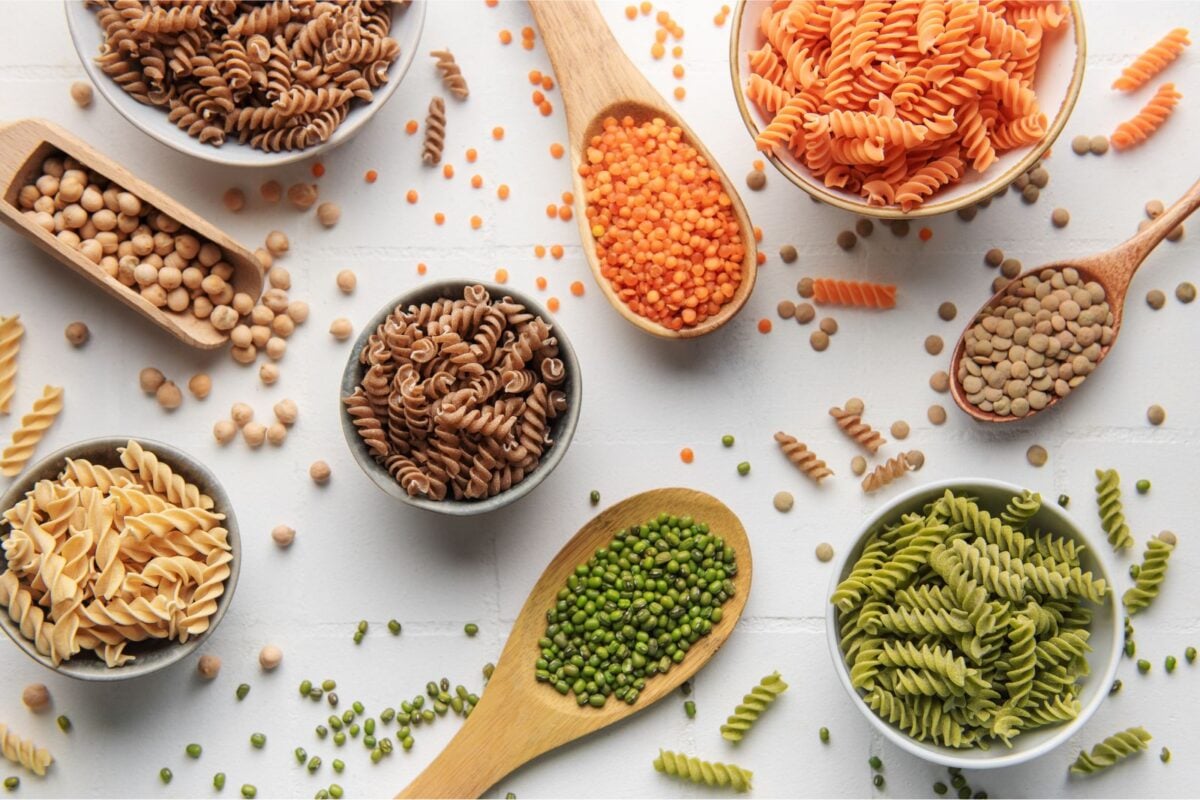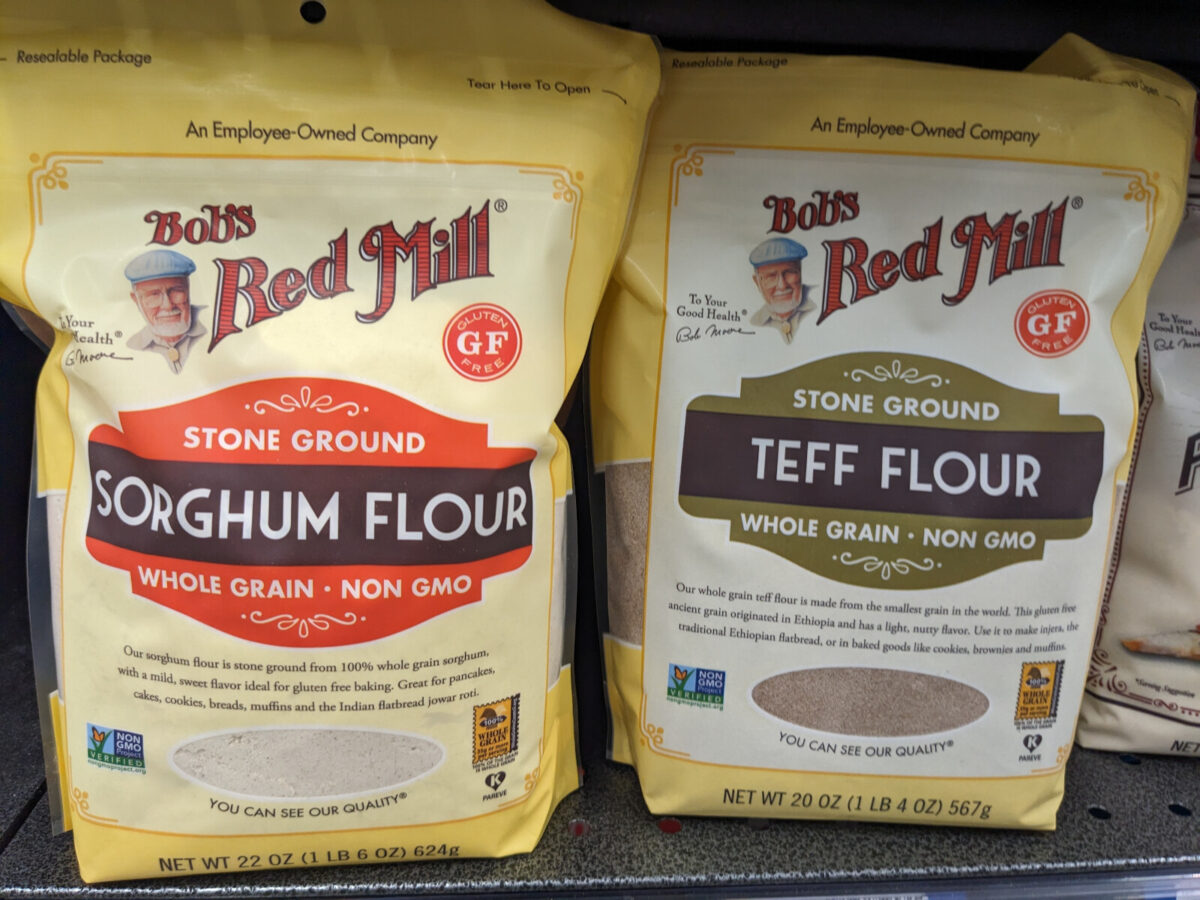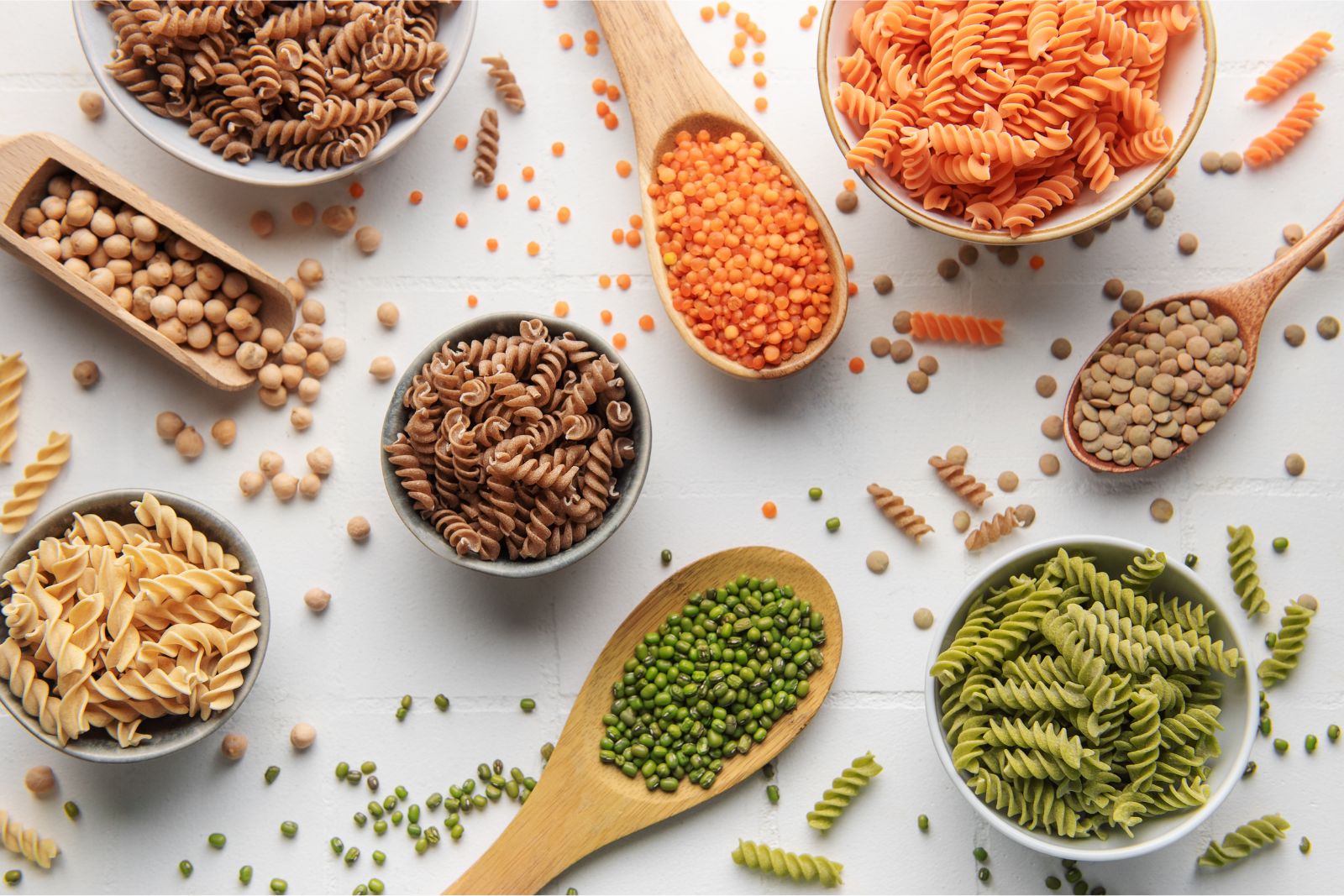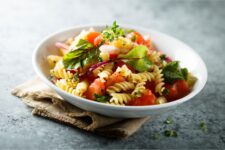Gluten is a protein found in wheat, barley, and rye. It can cause digestive symptoms in certain people, like those with celiac disease, non-celiac gluten sensitivity, or a wheat allergy (1).
If you’ve been told you need to follow a gluten-free diet, it can feel overwhelming to learn which foods contain gluten. The simplest way to avoid gluten is to focus on eating foods that are minimally processed and naturally gluten-free.

Join me for a tour of the grocery store aisles in search of naturally gluten-free foods in this comprehensive guide.
Label Reading
Though there are many naturally gluten-free foods, processed versions of these foods can sometimes have gluten as an added ingredient. It’s essential to understand how to read food labels on a gluten-free diet so you don’t accidentally consume gluten.
First, look for the “certified gluten-free” label on the package. This is the easiest way to tell if a food is gluten-free. If you don’t see the certification, you’ll need to read the ingredient list (1).

Be cautious of labeling that states a product is free of wheat because wheat-free does not always equal gluten-free. Barley and rye are non-wheat grains that also contain gluten and may be present in the food product (1).
Gluten-Containing Ingredients
The product is not gluten-free if you see any of the following ingredients on the food label (1, 2):
- Wheat or wheat flour (including bulgur, durum, farina, farro, einkorn, emmer, triticale, semolina, and spelt)
- Barley
- Rye
- Malt (including malt extract and malt vinegar)
- Brewer’s yeast
- Oats (unless certified gluten-free)
- Modified food starch (may be derived from wheat and indicated on the label)
- Soy sauce.
The following sections provide an overview of specific foods from each food group and how they fall into one of three categories:
- Naturally gluten-free foods
- Foods to avoid on a gluten-free diet
- Foods you should check the label before consuming
If you feel unclear as to whether a product contains gluten after reviewing the label, you may need to contact the manufacturer to clarify.
Grains
There are many naturally gluten-free whole grains that you can include in a balanced diet. Bread, cereal, pasta, and cracker products are acceptable if made with ingredients from the gluten-free list below, but always check the food label to be sure (3).

Gluten-Free Grains
- Rice (all varieties, including wild rice)
- Sorghum
- Quinoa
- Millet
- Buckwheat
- Amaranth
- Teff
- Oats (only if certified gluten-free)
- Arrowroot
- Tapioca
- Gluten-free pasta made from rice flour, chickpeas, or lentils
Grains to Avoid
- Wheat
- Barley
- Rye
- Triticale
- Einkorn
- Durum
- Farro
- Semolina
- Spelt
- Kamut
- Bulgur
- Couscous
Be cautious about products made with carob-soy flour and brown rice syrup, as these may contain gluten. Most canned soups, bouillon products, and dried soup mixes contain gluten, so read labels carefully (3).
Proteins
Almost all proteins in their unprocessed form are gluten-free. However, gluten is often added during processing (3).

Gluten-Free Proteins
- Meat
- Poultry
- Fish and seafood
- Eggs
- Soy foods without added flavor, such as tofu and edamame
- Beans
- Lentils
- Nuts and seeds
Proteins to Avoid
- Any protein breaded with gluten-containing flour
- Seitan (vital wheat gluten)
Many processed meats can contain gluten, making it important to read labels for the following protein foods (3):
- Sausages
- Hot dogs
- Bologna
- Lunch meat
- Swiss steak
- Meatloaf
- Meatballs
- Canned tuna containing hydrolyzed protein
- Imitation crab
Fruits
All fruits that don’t contain added ingredients are safe on a gluten-free diet. This includes fresh, frozen, and 100% fruit juices (3).

Gluten-Free Fruits
- Apples
- Berries
- Pears
- Oranges
- Bananas
- Plums
- Kiwis
- Peaches
- Cherries
Fruits to Avoid
Double-check the labels on canned fruits, dried fruits, and canned pie fillings, as some of these products can contain gluten (3).
Vegetables
All plain vegetables with no added ingredients, including fresh, frozen, and canned, are acceptable on a gluten-free diet (3).

Gluten-Free Vegetables
- Corn
- Potatoes
- Peas
- Broccoli
- Spinach
- Carrots
- Cauliflower
- Lettuce
- Green beans
- Onions
- Peppers
Vegetables to Avoid
Check the label on vegetable products with added ingredients, such as frozen broccoli with cheese sauce or canned cream of corn, because these may contain gluten (3).
Dairy
Most plain dairy products are gluten-free (3).

Gluten-Free Dairy Products
- Cow’s milk
- Plain yogurt
- Cottage cheese
- Sour cream
- Dry milk powder
- Evaporated or condensed milk
- Most cheeses
Dairy Products to Avoid
- Malted milk or ice cream
Double-check the labels on flavored dairy products, like chocolate milk, protein shakes, ice cream, and flavored yogurt. Some non-dairy creamers and processed cheeses like blue cheese also contain gluten (3).
Most non-dairy milk products, like soy, almond, and oat milk, are gluten-free, but it’s best to read the label.
Fats
Most unprocessed plant-based fats, oils, and butters are gluten-free (3).

Gluten-Free Fats
- Avocado
- Coconut
- Flax seeds
- Chia seeds
- Nuts
- Butter
- Margarine
- Vegetable oil
- Olive oil
Fats to Avoid
Look out for gluten-containing ingredients on the salad dressing labels, mayonnaise, dry roasted nuts, flavored nuts, and trail mix (3).
Beverages
There are many gluten-free beverages to choose from, but certain types of alcohol and drinks containing malt are not appropriate for a gluten-free diet (3).
Gluten-Free Beverages
- Water
- Coffee
- Tea
- 100% fruit juice
- Beer made from gluten-free grains
- Wine
- Distilled spirits, like rum, vodka, whiskey

Beverages to Avoid
- Beer
- Beer with “gluten removed” may not be gluten-free
- Malted milk
Some hard ciders, sports drinks, and instant-flavored coffees may have gluten as an added ingredient (3).
Condiments
The ingredients used in condiments vary greatly, making it essential to check the labels of most sauces, spices, and dressings before consuming them (3).

Gluten-Free Condiments
- Jelly/jam
- Most syrups
- Most individual herbs and spices
- Vinegar (except for malt vinegar)
- Tamari
- Coconut aminos
Condiments to Avoid
- Soy sauce.
- Malt vinegar.
Some curry powders, dry seasoning mixes, and gravy mixes may contain gluten. Carefully read condiment labels to determine the safety of products like ketchup, mustard, barbecue sauce, mayonnaise, and salad dressing (3).







